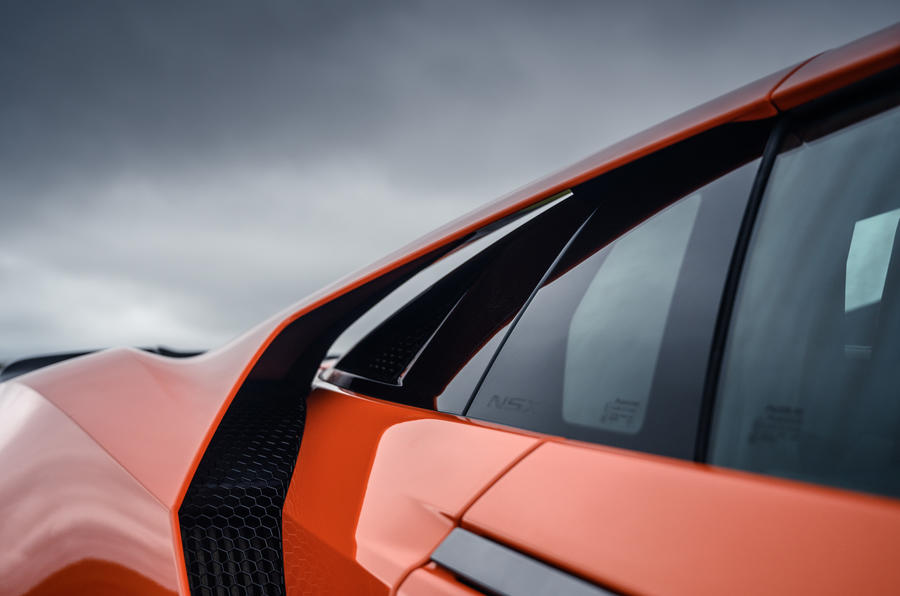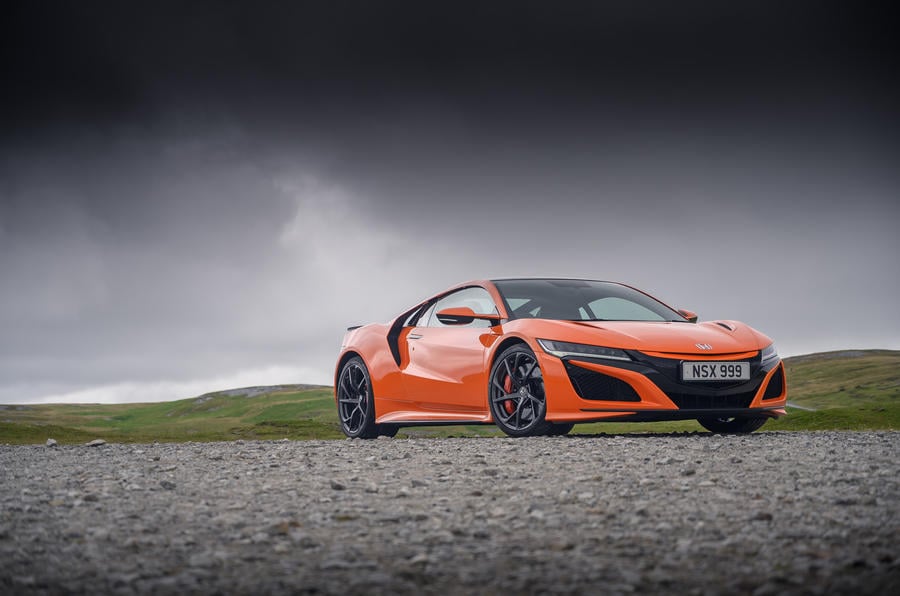The hybrid Honda NSX is an interesting showcase of technology, but hasn’t proved a trailblazer.
Given that it has been touted as the future of the fast car by more than a few industry commentators, it’s fair to say the formula of the mid-engined, four-wheel-drive hybrid supercar has yet to gain the traction that might be expected, considering how long it has been around.
Leaving aside limited-edition models like the Porsche 918 Spyder, the first was the BMW i8, which limped off sale a few months ago, six years after it appeared to represent the brave new world. I drove one for a year and loved every minute, but the market didn’t concur.
Nor does it appear enamoured with the only other hybrid supercar there has been since (at least until the Ferrari SF90 Stradale arrives). That car is the Honda NSX. It went on sale here at the end of 2016.
The truth, or at least part of it, is that it’s not good enough just to have the right idea; it has to be introduced at the right time, too. I will go to my grave convinced that the i8 was one of the most visionary mass-produced cars. But just as De Havilland’s Comet pioneered commercial jet aviation only for Boeing to steal its thunder (and profits) with the 707, so too will it be for others to learn from BMW’s courage in attempting to blaze a genuinely new trail.
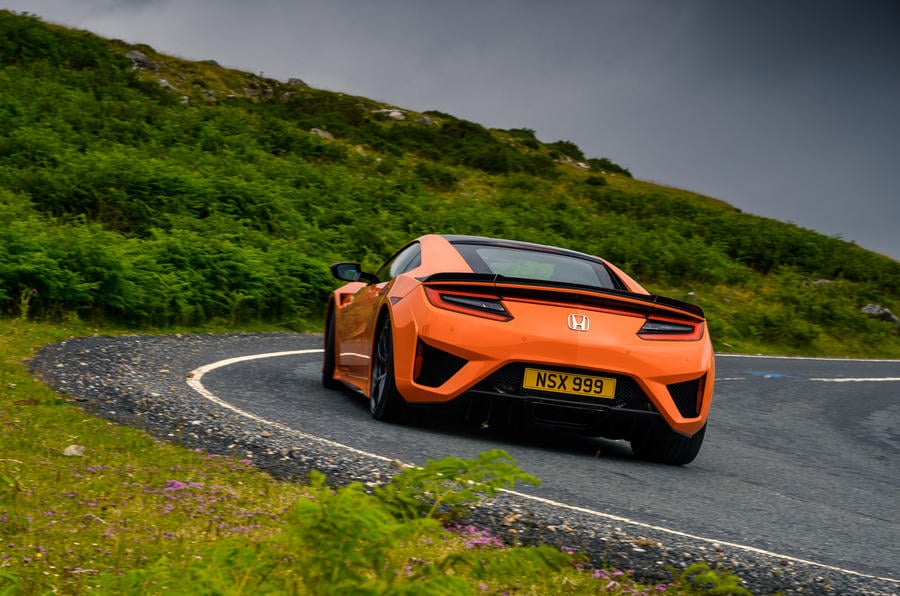
The problem is the concept is fundamentally flawed, and you only need look at the NSX to know it. Despite the fact that this car is a closed-circuit hybrid rather than a plug-in hybrid, which saves weight and space, it’s still heavy and not in the least spacious. Interior room is just adequate for my 6ft 3in frame, but the boot is sufficiently tiny to challenge any notion of touring. And it weighs 1770kg, which is plenty.
Put another way, this strictly two-seat, decidedly luggage-light supercar weighs the same as the BMW 520d Touring and 300kg more than its closest rival, the McLaren 570S. So while it provides 242kW per tonne, the 7kW less potent V8 car has 289kW per tonne – a difference of night-and-day proportion.
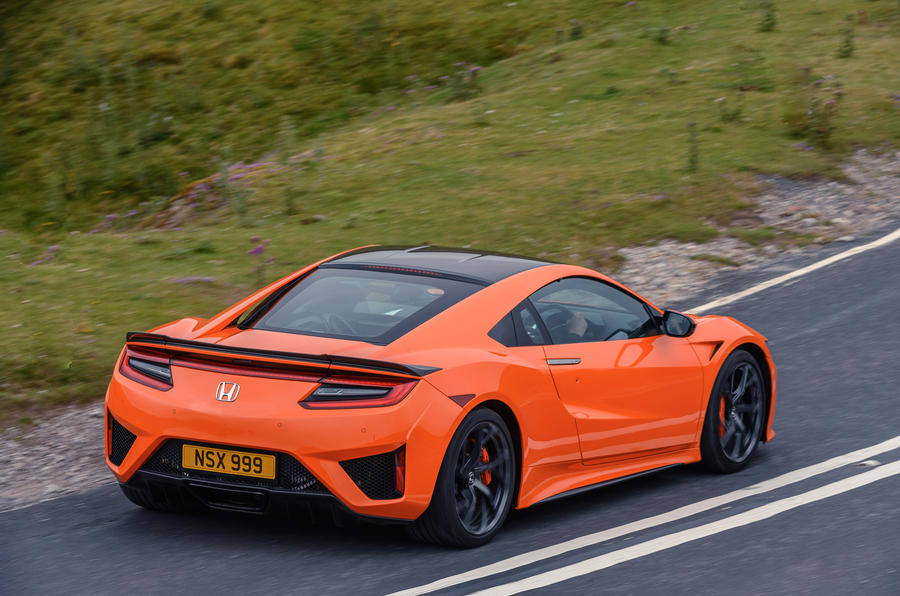
What’s that weight buying you? Traction, for one, thanks to the NSX’s front electric motors, but its 0-100km/h time of 3.3sec is actually 0.1sec off that of the 570S, so it seems there’s not much to gain there. And because you can’t plug it in, it needs its engine to fire up, so you will still wake your neighbours; and while it can travel on electricity alone, it’s only for a kay or two if you’re very careful, which seems pretty pointless.
However, there’s something else: an electrically driven front axle also creates the opportunity for torque to be used to make the NSX corner as well as accelerate, because it can not only slow an inside wheel but also accelerate an outer one the moment impending understeer is sensed.
This all sounds very clever but rather sterile and, to be honest, when I first drove the NSX three years ago, I was none too impressed by it. But although a recent mid-life refresh has left the car all but unchanged visually, Honda has been hard at work mitigating what it must have known from the start were the issues stemming from its considerable mass. Hence it comes with new anti-roll bars and suspension bushes, redesigned rear wheel hubs and revised settings for the dampers, power steering, transmission and four-wheel drive. Continental even developed a brand new Conti Sport Contact 6 tyre for this car alone. The result is a considerable 2.0sec improvement in lap time at Suzuka.
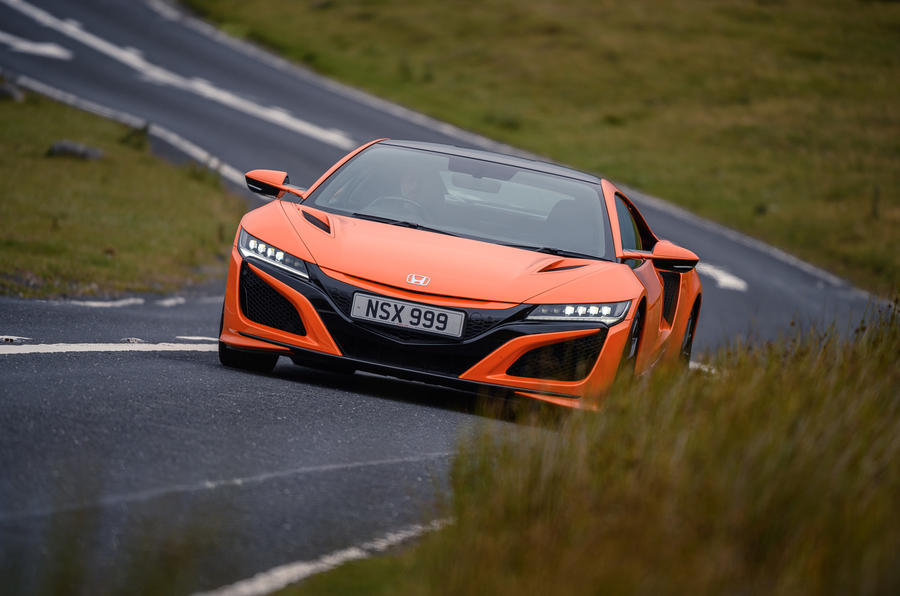
But this is no track car. Of rather more importance is the fact that the NSX is now far more composed on the road, too. And there’s much to enjoy here. All those who say a twin-turbocharged V6 can only sound dull should listen to this. Indeed, it makes a far nicer noise than the flat-plane-crank V8s used by McLaren and Ferrari. It’s more than fast enough for all save pub braggers, and it has that ability to smooth out every bump on the road without compromising primary body control that only cars with very clever dampers programmed by even cleverer engineers manage. I’d still prefer a bit more bite from the ’box in Sport Plus mode and perhaps a touch more brake feel, but these are more observations than complaints.
Make no mistake: point to point, the NSX is a very fast car, and such pace is only partly down to its power and control. It’s also about the fact that you can see out of it; it’s in many regards no more daunting to operate than a Honda Jazz. I regard this as an entirely good thing for such a car, for thus from springs the confidence without which no large, wide mid-engined supercar can be enjoyed.
Yet something remains absent. I just can’t see anyone reaching the end of a decent road in an NSX and having one of those moments. Those moments where you park up and shut down, listen to the car cool, feeling your pulse rate slow, and relive every moment of what just happened, not simply because you want to experience it again but because you want to save it forever, a memory of a joyous experience there to be called upon whenever you’re sad or bored.
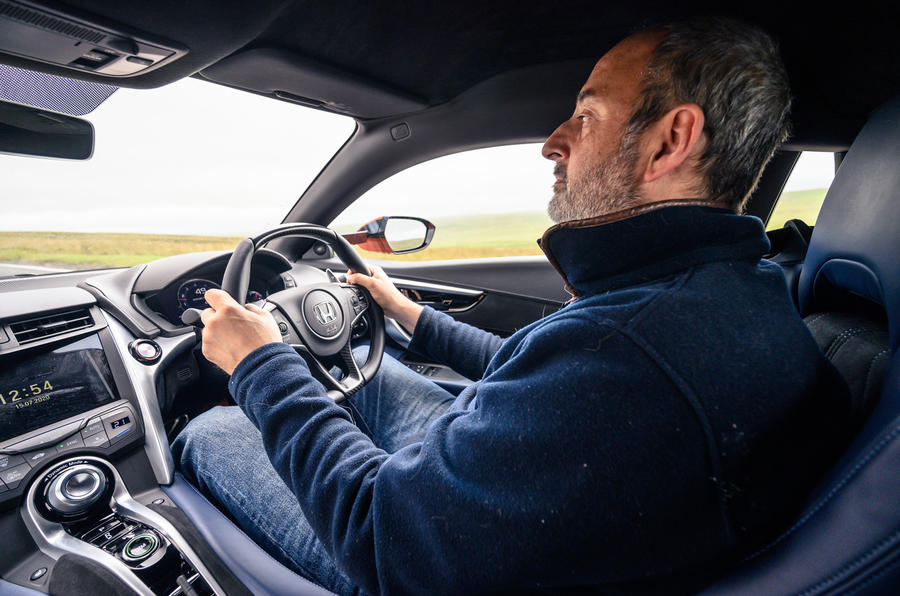
Why can’t it do that? The mass is part of it, but ultimately the NSX gets its priorities wrong. It’s as if its American designers set out to create the most impressive car they could, one in which the driver could witness with awe the talent and technology on display. And, best of all, it would ask for nothing in return. Sit back, hold this, press that and enjoy the show. You will be amazed.
Well, maybe. But you won’t be involved, let alone enthralled. Driving isn’t a spectator sport and your car shouldn’t seat you in the audience. It’s not even enough that you should get to direct the action. Driving should be a two-hander between two actors, you and your car, with the road as your stage. That’s it. Anything that get in the way of that, be it excess weight, over-reliance on electronic control systems or a lack of feel in the steering or brakes, gets in the way of your driving pleasure.
That isn’t to say there’s no future for hybrid supercars, just that they need to be done a different way. To be honest, BMW tried far harder and achieved far more with the i8. You could plug it in, you could go 10 times as far in silence (at least), it had rear seats (of a sort), it sounded just as good on three cylinders as the NSX does on six and it had a carbonfibre tub, which is why it was also phenomenally light for a hybrid supercar – 235kg lighter than the NSX, no less. Yes, the Honda has more power, but that’s the easy bit.
The post-modern supercar I would like to see has two seats and a 2.4-litre twin-turbo V6 with an electric motor between it and the gearbox, directing an easily achieved 373kW through the rear wheels alone. It has a carbonfibre tub, aluminium panels and lots of luggage space up front (because there are no motors to get in the way) and weighs less than 1500kg. It’s less potent than the NSX but has a better power-to-weight ratio. And I don’t think it’s a fantasy, either; I think it’s achievable today.
Will anyone do it? Who knows. But until someone finds a way to keep weight in hand and resists the urge to go overboard with electronics, the idea of the hybrid supercar will still be far more attractive on paper than it turns out to be on the road – as the NSX continues to show all too well.
Is downsizing the way forward?

The Honda NSX isn’t alone in using a relatively small-capacity engine allied to a hybrid system instead of a larger, simpler unit. For the first time in history, Ferrari’s flagship now has a compact V8, not a V12. McLaren’s future lies not with V8s but with a hybridised V6, while Mercedes-AMG appears on the point of forsaking its legendary V8s altogether in favour of humble hybrid four-pots. The V10 in all forms is critically endangered.
The downsized hybrid approach can do good things; it helps harness power and drives down CO2 emissions and improves economy – in official testing, at least. But it hasn’t yet proven in the least convincing at making cars better to drive. Indeed, the inevitable additional mass that it brings is directly contrary to this aim. I’ve said it before: the only way to make cars genuinely sustainable and entertaining in the long term is to make them lighter. Everything else should be secondary.
Andrew Frankel
